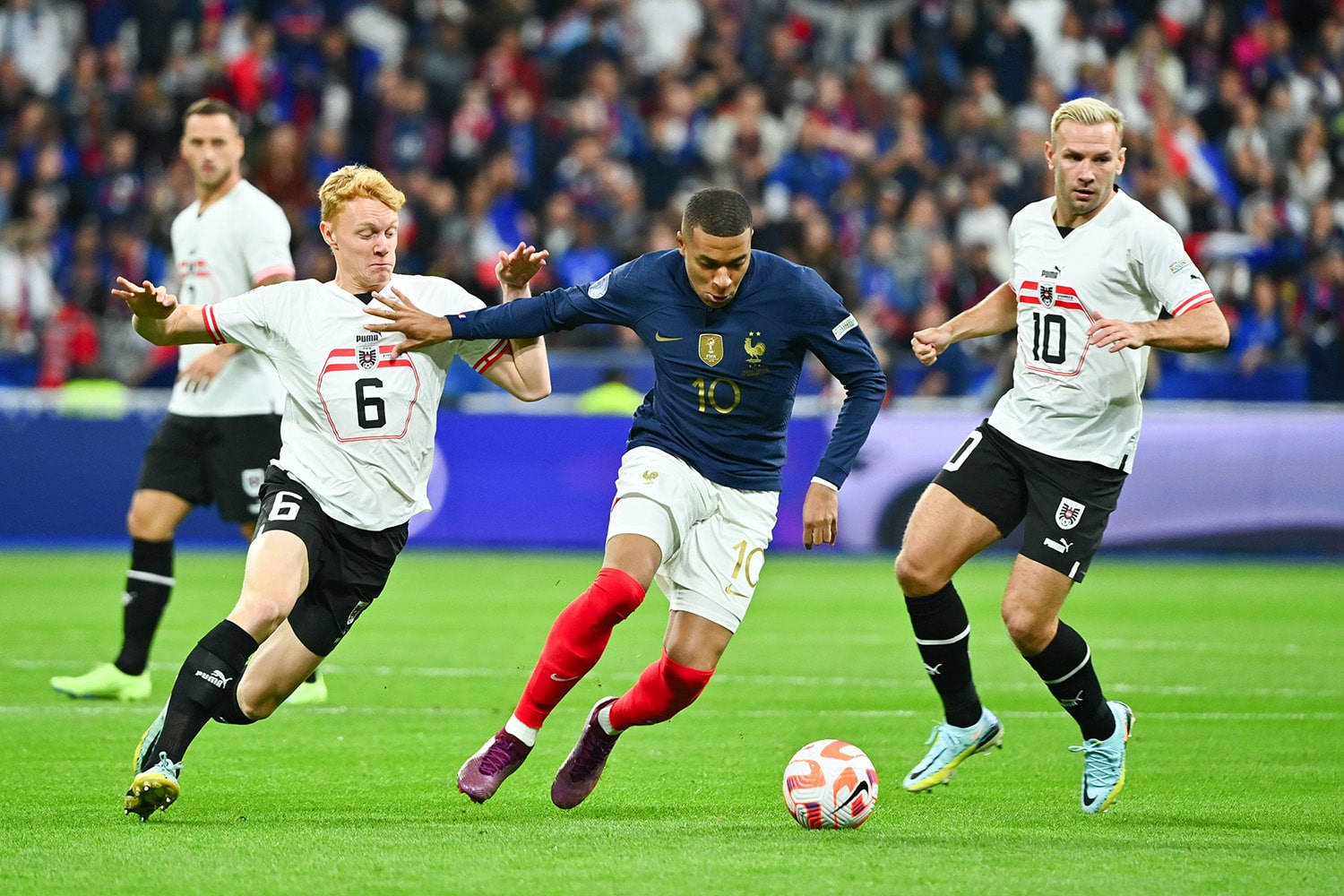
Behind the Screen: Unpacking How VAR Decisions Are Made in Football
Football, the beautiful game, has always been synonymous with passion, drama, and sometimes, controversy. For decades, the outcome of crucial matches often hinged on split-second decisions by a single referee, leading to intense debates and a lingering sense of injustice when human error prevailed. Enter the Video Assistant Referee (VAR) – a technological intervention designed to minimize "clear and obvious errors" and "serious missed incidents" that can change the course of a game.
Since its experimental introduction and subsequent widespread adoption, VAR has revolutionized how critical moments are officiated. Yet, for many fans and even players, the exact process of how VAR decisions are made remains shrouded in mystery, often perceived as an opaque system that disrupts the game’s flow. This article aims to pull back the curtain, detailing the intricate steps, personnel, and technology involved in a VAR review, demystifying the journey from incident to final decision.
The Genesis of VAR: A Quest for Fairness
The push for VAR stemmed from a universal desire to enhance fairness and accuracy in football. High-stakes matches, often decided by marginal offside calls, unpunished fouls, or incorrect penalty decisions, highlighted the limitations of human perception in real-time. FIFA, through the International Football Association Board (IFAB), the guardians of the Laws of the Game, initiated trials in 2016. The goal was not to re-referee every decision, but to provide a safety net for game-changing moments. The philosophy was simple: preserve the flow and spirit of the game while correcting egregious errors.
The VAR Team: Behind the Scenes
A VAR decision is never made by a single individual. It’s a collaborative effort involving a dedicated team operating from a Video Operation Room (VOR), typically located centrally, away from the stadium. This team comprises:
- The VAR (Video Assistant Referee): An experienced, current or former FIFA-listed referee. Their primary role is to monitor all camera feeds, identify potential clear and obvious errors or serious missed incidents, and communicate with the on-field referee. They are the decision-making hub of the VAR team.
- The AVAR (Assistant Video Assistant Referee): Often a former referee or assistant referee. Their role is multi-faceted: assisting the VAR by watching the live action, keeping track of game incidents, and specifically focusing on offside situations or other aspects that might be missed by the VAR during a review. In some setups, there might be multiple AVARs, each with a specific focus (e.g., one dedicated to offside, another to general play).
- The Replay Operator(s): Highly skilled technicians responsible for instantly finding and displaying the best camera angles and replays for the VAR and AVARs. They are crucial for efficiency, quickly navigating through numerous feeds to pinpoint the exact moment of an incident.
This team works in constant communication, meticulously reviewing incidents from multiple angles and speeds, ensuring every detail is scrutinized before any recommendation is made to the on-field referee.
The Four Reviewable Incidents: When VAR Intervenes
VAR is not used for every foul throw or minor infringement. Its scope is strictly limited to four "game-changing" categories:
- Goals: This is perhaps the most common VAR intervention. VAR can check for offside in the build-up, fouls committed by the attacking team, handballs, or other infringements that invalidate a goal.
- Penalty Incidents: VAR can review whether a foul occurred inside or outside the box, if a foul was committed at all, or if a penalty decision was wrongly given or not given (e.g., a clear foul missed by the referee).
- Direct Red Card Incidents: VAR only intervenes for direct red cards (e.g., violent conduct, serious foul play, denying a clear goal-scoring opportunity). It does not review yellow cards or second yellow cards leading to a red.
- Mistaken Identity: In rare cases, if the referee issues a yellow or red card to the wrong player, VAR can step in to correct the error.
It’s vital to understand that VAR’s role is not to find new infringements but to correct clear and obvious errors or serious missed incidents within these four categories. Marginal calls, even if debatable, are generally left to the on-field referee’s discretion.
The Decision-Making Process: Step-by-Step
The journey from an on-field incident to a VAR decision involves a precise, multi-stage protocol:
Phase 1: Incident Detection & Communication
The process can be initiated in two ways:
- Referee Request: The on-field referee, unsure about a decision they’ve made or failed to make, can signal for a VAR review.
- VAR Initiates Check: The VAR team, constantly monitoring the live action, may identify a potential clear and obvious error or serious missed incident that the referee might have overlooked. They will then conduct a "silent check."
During a silent check, the VAR team reviews the incident without stopping play, if possible. If the check confirms no clear error, play continues uninterrupted. If they identify a potential error, they immediately inform the referee via their communication earpiece.
Phase 2: The Review Protocol
Once a potential error is flagged, communication becomes key. The VAR informs the referee of the nature of the incident and recommends a review. The referee can then:
- Accept the VAR Information (VAR-only Review): For factual decisions where there’s no room for interpretation (e.g., offside, ball out of play before a goal), the VAR can simply inform the referee of the fact. The referee then changes their decision based on this objective information without needing to view the replay themselves. This is common for offside calls where calibrated lines determine the exact position.
- Conduct an On-Field Review (OFR): For subjective decisions that require the referee’s interpretation (e.g., intensity of a foul, handball interpretation, whether an action constitutes serious foul play), the VAR will recommend an OFR. The referee then goes to a designated Referee Review Area (RRA) pitchside monitor to watch replays of the incident from various angles provided by the replay operator.
During an OFR, the referee is in control. They listen to the VAR’s guidance, watch the replays repeatedly, and ultimately make their own judgment. This is crucial because, according to IFAB, the final decision always rests with the on-field referee. The VAR’s role is advisory.
Phase 3: The Outcome & Implementation
Once the referee has made their final decision, whether through a VAR-only review or an OFR, they communicate it to the players, coaches, and spectators. This is typically done by making a clear hand gesture (forming a rectangle with their hands for an OFR) and then signaling the revised decision (e.g., disallowing a goal, awarding a penalty). In many leagues, a brief explanation of the decision (e.g., "Goal disallowed, offside") is displayed on stadium screens to enhance transparency.
Technology Underpinning VAR
The efficiency and accuracy of VAR heavily rely on sophisticated technology:
- Multiple Camera Feeds: A standard VAR setup utilizes feeds from all broadcast cameras, often augmented by dedicated VAR cameras that provide specific angles (e.g., tighter shots along the goal line or touchlines). The more angles, the better the VAR team’s ability to scrutinize an incident.
- Specialized Replay Software: Advanced software allows replay operators to instantly access, slow down, freeze, and loop footage from any camera, as well as apply graphical overlays like offside lines.
- Communication Systems: A robust and secure audio communication system ensures seamless, real-time dialogue between the VAR team and the on-field referee, even amidst the roar of the stadium.
- Calibration Tools: For offside decisions, highly precise calibration tools are used to draw virtual lines on the pitch, ensuring accurate measurement of players’ positions relative to the ball and the second-to-last defender.
The advent of Semi-Automated Offside Technology (SAOT), as seen in recent major tournaments, represents a significant leap. This system uses dedicated tracking cameras and sensors embedded in the match ball to provide highly accurate, instantaneous data on players’ limb positions and the exact moment the ball is played, generating 3D animations that significantly speed up offside checks.
Challenges and Criticisms
Despite its undeniable benefits in correcting clear errors, VAR has not been without its critics:
- Time Consumption: Reviews, especially OFRs, can take significant time, disrupting the game’s flow and reducing effective playing time.
- Subjectivity and Interpretation: While designed for "clear and obvious" errors, what constitutes "clear and obvious" can still be subjective, leading to inconsistent application across different referees or matches. Handball decisions, in particular, remain a contentious area.
- Loss of Spontaneity: The delay in celebrating a goal, only for it to be potentially overturned, can dampen the immediate joy of the game for fans.
- Fan Experience and Transparency: A lack of real-time communication from the VAR team to the stadium audience can leave fans bewildered during reviews. While stadium screens show the final decision, the reasoning behind it is not always immediately clear.
- Over-analysis: Critics argue that VAR sometimes scrutinizes incidents to an extent that goes against the spirit of the game, focusing on millimeters rather than the overall flow.
The Unquestionable Benefits
Despite the criticisms, the core benefit of VAR remains irrefutable:
- Increased Accuracy: It significantly reduces the number of major match-changing errors, ensuring fairer outcomes.
- Justice Served: It provides a mechanism to rectify injustices that might otherwise stand, protecting the integrity of the competition.
- Deterrent Effect: Players are more aware that serious fouls or acts of simulation are likely to be caught and punished, potentially leading to fairer play.
The Future of VAR: Towards Refinement
VAR is still a relatively young technology in football, and it continues to evolve. Future improvements are likely to focus on:
- Enhanced Speed: Technologies like SAOT are designed to accelerate factual decisions.
- Greater Transparency: More real-time communication of VAR decisions to fans, perhaps even live audio from the referee and VAR, is being explored in some competitions.
- Improved Consistency: Ongoing training for referees and VARs, along with clearer guidelines, aim to reduce variations in interpretation.
- Refined Protocols: IFAB continuously reviews and updates the Laws of the Game and VAR protocols to address emerging issues and optimize the system.
Conclusion
The process of how VAR decisions are made is a complex interplay of human expertise, cutting-edge technology, and stringent protocols. Far from being a simple button-press, it involves a dedicated team meticulously reviewing incidents from multiple perspectives, all under the guiding principle of correcting clear and obvious errors that could unfairly impact the outcome of a match.
While VAR has undeniably introduced new debates and altered the traditional rhythm of football, its fundamental purpose – to enhance fairness and accuracy – remains vital. As technology advances and protocols mature, VAR will continue to be refined, aiming to strike the perfect balance between preserving the human element and ensuring that the beautiful game is decided by skill and fair play, not by unavoidable human oversight. The screen may hide the individuals, but behind it lies a systematic effort to uphold the integrity of football.



